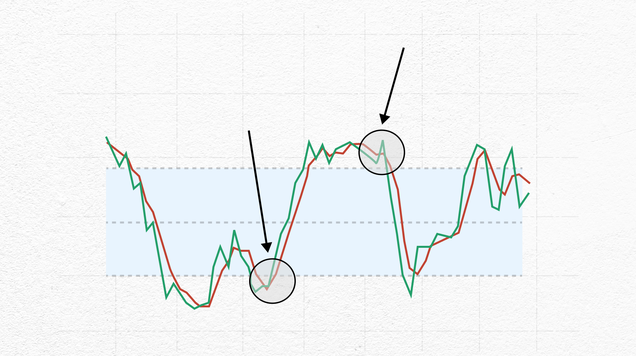Grow Your Wealth: Value & Income Investing Concepts
The art of picking profitable stocks and securities is composed through careful research, thoughtful analysis, and a keen understanding of risk tolerance

Value investing involves flipping undervalued assets for profit, pioneered by Warren Buffet.
Value investors also seek growth opportunities from rapidly expanding companies.
Income investing involves generating a steady stream of profits by purchasing assets.
Income investors seek fixed dividends from stocks, real estate trusts and debt securities.
The success of both strategies relies upon determining risk tolerance.
Global Investors have different investment goals but ultimately, they aim to maximize their returns while minimizing their risks. Among the various investment strategies utilized by investors globally, value investing has emerged as one of the most widely adopted approaches. Whilst other investors seek a more consistent approach through income investing. Let's take a look at both approaches, but first understand how to invest, measure and maximize profits.
how to invest in a company with a long-term perspective?
Investing in a company with a long-term perspective involves a strategic approach that considers the company's fundamentals and future growth prospects. For example, recently, global stocks suffered from strong declines due to geopolitical tensions, high-risk aversion, and central banks' aggressive approach of tightening monetary policy. Therefore, thorough research and analysis are essential for making informed investment decisions.
Another way to look at this is by the importance of the key phrase “don’t put all your eggs in one basket” Diversification can help reduce risk by spreading out investments across different companies, industries, and even countries. By doing so, you can minimize the impact of any single investment on your overall portfolio. Additionally, diversification can help you capture opportunities in different areas of the market, rather than relying solely on a few stocks or sectors.
How do value investors select assets?
Value investors typically look for assets that are undervalued or have potential for high growth. Undervalued investments are typically recognized by good value, low risk and low share prices.
Investors seek undervalued assets as the market will likely correct undervaluation in the long term, which means the risk they hold compared to overvalued assets is minimized. They are also referred to as intrinsic investments, as they represent assets that are traded at a lower price than their essential value. Value investors will seek mispriced or undervalued assets with the goal of holding them for long periods until their true value is recognized. Popular sectors include stocks, bonds, currencies, commodities, and real estate.
Value investors also seek growth investments by finding companies that show signs of accelerated expansion. This will ideally result in a high P/E ratio, which has been seen in companies like Amazon, Apple and Tesla.
Growth investing is measured using various fundamental analysis techniques such as evaluating financial statements, earnings reports, and offerings of generous dividends and low risk. It can also be calculated through technical analysis, such as by using a discounted cash flow model. This model depicts an asset’s value through the sum of its future cash flows, discounted back to the present.
A popular and useful metric for identifying income and growth value investments is evaluating the P/E ratio of a company’s stock. P/E ratios (Price to Earnings) compare a company’s share price to its annual net profits, which creates a standard for comparing similar-sized companies from any industry. Companies with lower P/E ratios are more likely to qualify as value investments, but other metrics like the PEG ratio (Price to Earnings to Growth) or the P/B ratio (Price to Book) are also popularly considered by professional investors and traders. All successful trading strategies will consider multiple factors, research, and determine their own appropriate risk appetite.
There are many sectors that host potential value investments, but many investors will lean towards, telecom, industrial and insurance stocks. However, as stocks tend to vary in lifecycles, any asset’s growth will almost certainly be influenced by market conditions and industry trends.
Popular Value Stocks
- J.P. Morgan
- Warner Bros
- P&G (Procter & Gamble)
- FedEx
- Citigroup
- Goldman Sachs
“Find an outstanding company at a sensible price.” – Warren Buffet.
How can investors generate income?
Income investors look for assets that generate regular income by buying bonds, securities and dividend paying stocks. These assets produce income that is consistent and predictable through interest, dividends, or other distributions. Typically, these assets will be high yield - which means that income is generated at a percentage of the asset’s price. They can also be securities that show a history of stable income generation and a low risk of default, such as government bonds from strong economies. These can include preferred Stocks, bonds, or real investment trusts.
Preferred stocks pay a fixed dividend and usually have a higher dividend yield than common stocks.
Bonds are the most popular type of fixed income securities, as they provide a consistent interest payment to the holder.
Real-estate investment trusts refer to companies that own and manage income-generating properties, which reflect high earnings that turn into dividends for shareholders.
Investment strategies like value investing and income investing can be effective ways to build a diversified portfolio and achieve long-term financial goals. For both strategies, it's important to consider the risk tolerance, investment goals and portfolio diversification before picking the desired investment.
Investing in a company with a long-term perspective requires patience and discipline. Focus on investing in high-quality companies and hold your investments for the long-term to maximize your returns.
The Art of Picking Stocks









